The management by objectives methodology, first introduced by Peter Drucker, is a process in which employees and managers come together to define their goals and create a roadmap for how to achieve them. OKR stands out as one of the most prominent implementation methods within this methodology.
Initially implemented by Intel, this method was designed to prevent managers and employees from easily achieving their goals by selecting achievable goals. On the other hand, the micro-management style of managers constantly telling employees what to do in what order and how has been observed to lead employees away from focusing on strategic matters and improvements. Additionally, it has been observed that an environment where only top management discusses the strategy and employees do not contribute causes significant difficulties in implementation.
OKRs are built on a foundation of creating unit, team, and personal goals at short intervals of 3 months, aligning them with company goals, and prioritizing them. Through a process built on transparency, employees can see the goals and projects of all units, teams, and the organization, understanding where their tasks fit in the big picture. This way, they can decide what could be the top priorities for the organization in their tasks, determining the areas to focus on clearly.
The top-level OKRs determined are like the North Star for organizations; they determine the direction the ship will take. This provides alignment and collaboration between units and employees (alignment should plan how different units will collaborate). They have the quality of a contract between the organization and employees, increasing accountability through their transparency.
Benefits:
- Collaboration and alignment between units
- Agility
- Open communication
- Employee engagement
- Autonomy and accountability
- Focus and discipline
- Speed
OKR Components:
Objective and Key Results are acronyms for Objective Key Results. It consists of 3 main sections.
Objective (Goal):
It determines what needs to be achieved. It should be qualitative and inspiring, not contain numerical data. It should be limited by a specific time frame, be realistic, and should be possible to be completed within the defined time frame. At the same time, it should be challenging and able to motivate and encourage the team that will implement it.
Some sample OKRs are listed below:
- Launch a new MVP.
- Change the shopping habits of employees with home delivery services.
- Make public transportation within the city the preference of all segments.
- Boost revenue.
Key Results:
These are the criteria that indicate what results need to be achieved to succeed in the goal. They should be numerical, measurable, and trackable.
OKR Examples:
Objective: Make public transportation within the city the preference of all segments.
- KR-1: Reduce private vehicle traffic by 10% in Region A between 17:00-20:00.
- KR-2: Increase metro usage rate by 5% in Region A between 17:00-20:00.
- KR-3: Decrease bus occupancy rate by 3% in Region A between 17:00-20:00.
Objective: Boost revenue.
- KR-1: Reach a monthly revenue of 150,000 USD
- KR-2: Increase online sales by 15%.
- KR-3: Open 4 new stores.
Objective: Launch a new MVP.
- KR-1: Be in the top 5 on Product Hunt’s weekly product ranking.
- KR-2: Get 1,000 sign-ups and achieve a 3% conversion rate.
- KR-3: Ensure 300 users log into the app at least twice a week.
Objective: Improve the sales incentive system to increase motivation.
- KR-1: Achieve an 80% satisfaction rate in the sales teams with the new incentive system.
- KR-2: Reduce the voluntary turnover rate in the sales teams by 50%.
- KR-3: Increase sales by 5% in the first quarter.
Initiatives:
These are activities, projects, or tasks to be carried out to achieve the goals. Fulfilling these tasks alone is not enough. What is important is whether the success criteria (key results) are achieved.
Objective: Make public transportation within the city the preference of all segments.
KR-1: Reduce private vehicle traffic by 10% in region A between 17:00-20:00.
- Initiative-1: Increase bus ticket prices.
- Initiative-2: Introduce neighborhood shuttle services at metro stops.
- Initiative-3: Allocate 1 lane to cars carrying more than one passenger.
OKR Types:
There are 4 types of OKR:
- Company OKRs
- Department OKRs
- Team OKRs
- Personal OKRs
Depending on the size and structure of the organization, department or team goals can be used individually or both.
Company goals are planned annually by top management, while unit goals are planned on a quarterly basis. Each department or team leader presents their OKRs with their team, explaining how they will contribute to company goals based on the company’s priorities. When setting department and team-level OKRs, it is essential that the OKRs within the units are aligned and contribute to the company goals with the same focus. Alignment workshops are conducted to prevent conflicting goals in different units.
OKR Alignment:
One of the most important features of OKRs is that they are a tool for alignment and collaboration. Alignment is the process of units coming together to coordinate, prioritize, and plan how they will work together to achieve goals. Alignment is achieved through transparency, shared goals, and participation at all levels.
Transparency:
All OKRs and the results of OKRs are visible to employees at all levels within the organization. While some goals may be confidential, the majority of goals are expected to be transparent. This allows teams to prevent future chaos by seeing that their goals are not aligned with the goals of other teams.
Shared Goals:
To promote collaboration between units and the ability to work together, one goal may be shared with multiple units. Each team, in coordination with another team, determines the planning related to the shared goal.
Participation:
Not only top-down but also bottom-up and even horizontal, everyone can contribute. When contributions are made from bottom to top, each team decides how they will contribute to the company’s goals on their own. Ideally, this planning is done simultaneously with both bottom-up and top-down cooperation and coordination, and when consensus is reached, the entire team will turn its focus in the same direction.

OKR Frequency:
In established OKR processes, goals are often divided into strategic and tactical categories. While company goals are strategic and long-term (1 year), department or team goals are more tactical and short-term. For example, dominating the “North African region” is a long-term strategic goal, and the company or team goals set in 3-month intervals related to it are tactical goals.
Yearly or Long-term Strategic Company Goals:
Dominate the North African market.
Launch the XYZ model as the top-performing product in its class.
Ensure that at least one product from the ABC white goods family is present in 3 out of 4 households.
Short-term Quarterly Company Goals:
- Make facial recognition feature work perfectly.
- Strengthen the dealer network in Eastern Anatolia.
- Open 1 new store in Tunisia.
All units and teams focus on quarterly goals that have been established within the framework of long-term strategic goals. To reach the long-term yearly goal, the focus for each quarter is determined, and alignment is achieved for the entire team.
OKR Check-Ins:
Organizations implementing the OKR process are expected to create a culture of work based on goals. Therefore, goals and their performance should be regularly updated by their owners. Teams should regularly review and report on the goals, success criteria, and/or action plans. As a result of these meetings, if necessary, changes should be made to the action plans, and actions should be planned.








